War relics exhibit marks anniversary
Updated: 2015-06-26 00:33
By HUA SHENGDUN in Washington(China Daily USA)
|
||||||||
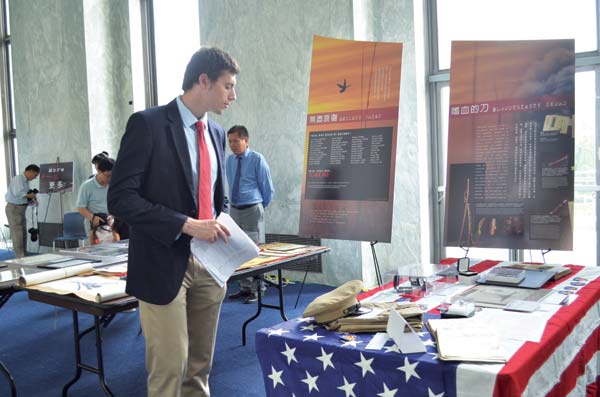 |
|
The Retaining History, Restraining Sin exhibit, commemorating the 70th anniversary of the Anti-Japanese War, opened on June 18 at the Rayburn House Office Building in Washington. [PHOTO BY LIU JINGYANG / FOR CHINA DAILY] |
A grassroots collection of relics from the Anti-Japanese War is on display on Capitol Hill from June 18-19. The exhibit commemorates the 70th anniversary of China's victory after eight years of war.
The exhibit was hosted by the American Alliance for Research on the History of World War II, a California-based organization dedicated to preserving the relics collected by its Honorary President Liu Lei. Most of the members in the organization are businessmen who originally came from China.
The exhibit came to the Rayburn House Office Building at the invitation of US Congressman Mike Honda, who represents the 17th Congressional District of California.
The Greater-Washington Shandong Cultural Association also supported the exhibit, providing volunteers to help set up and to tell visitors stories about the relics.
The exhibit contains more than 400 items, including photos, soldiers' personal items such as diaries and postcards, and Japanese swords of high-ranking military officers.
Liu has been a relic collector for more than 20 years, and the relics exhibited are part of his personal collection.
Liu said the relics come from all over the world. Apart from China, some relics were also purchased from Southeast Asia, Australia and the United States.
"At first I had to go find people with relics myself," he said. "As I get more press coverage, more and more people come to me with their relics.
"I have family who fought in the Anti-Japanese War.," Liu said. "For me, this is family history, but also national memory. The war has become history for 70 years.
"All we can do today for those who once fought and died for us is preserve that history," he said. "I do that by collecting these relics, one by one. If we don't have the time and energy to study these relics, at least I can preserve them for future generations to study," he said.
Helen He, secretary general of the alliance, said it made a concerted effort to organize the exhibit within a month.
“It began as a random idea, but turned out to be a huge project for us,” He said. She described the meticulous work of organizing the relics, writing captions and translations, and printing brochures.
"We couldn't have done it without the dedication of our two presidents," He said. "Millions were spent to collect and preserve what we have here now, and most of the money came from their own pockets."
Liu said the alliance did not receive any government or other funding. The alliance sometimes receives donations, but in small amounts.
"For example, the only donation we got by exhibiting here is $50," Liu said. "But I am still happy. This shows we moved someone, and they found the exhibit meaningful."
"We are now looking to cooperate with more researchers and historians to study the relics we have collected," said Chang Yang, president of the alliance.
Liu Jingyang in Washington contributed to this story.
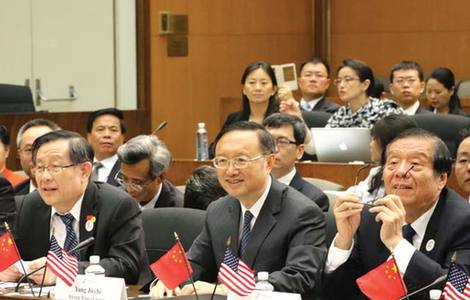
 Main event
Main event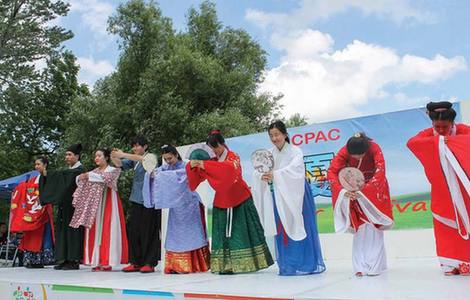
 Across Canada(June 26)
Across Canada(June 26)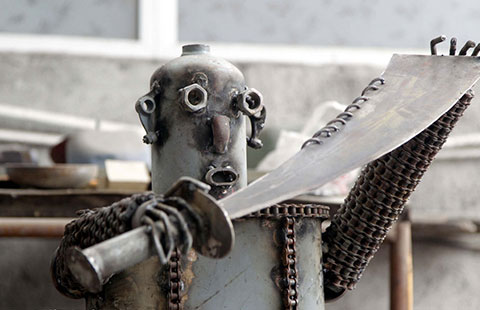
 Turning metal waste into robot-like artwork
Turning metal waste into robot-like artwork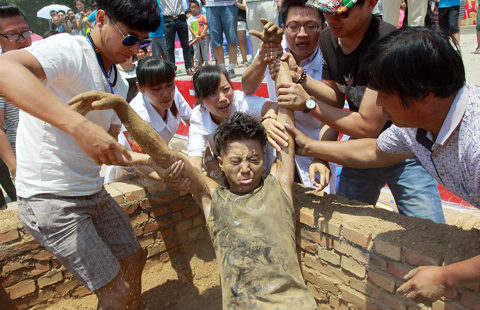
 Man breaks record for being buried alive
Man breaks record for being buried alive
 Ten photos you don't wanna miss - June 24
Ten photos you don't wanna miss - June 24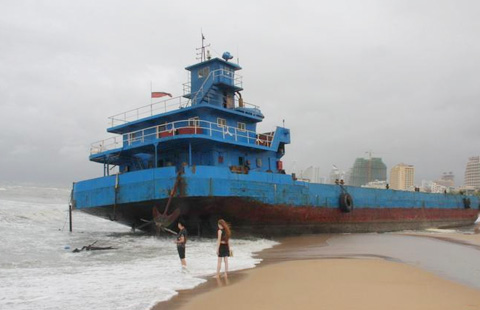
 Three ships stranded as tropical storm Kujira hits S China
Three ships stranded as tropical storm Kujira hits S China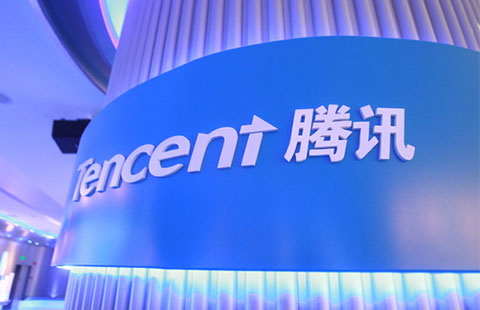
 Top 10 most valuable Chinese brands of 2015
Top 10 most valuable Chinese brands of 2015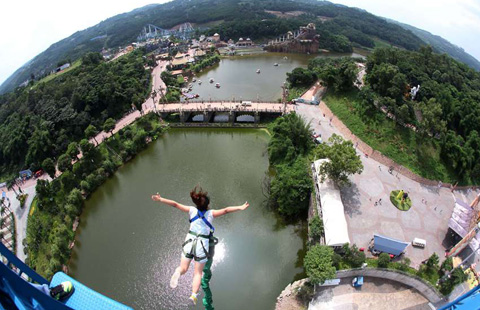
 Ten photos you don't wanna miss - June 23
Ten photos you don't wanna miss - June 23
Most Viewed
Editor's Picks

|

|

|

|

|

|
Today's Top News
US Supreme Court upholds key Obamacare insurance subsidies
Productive talks praised
China, US can be 'driver' of world peace
Chinese Defense Ministry opposes US bill including Taiwan
Xi: Bilateral ties should be kept on course
Chinese, US leaders meet with CEOs
Kerry praises US-China on
climate efforts
Liu calls for more 'she power'
US Weekly

|

|






